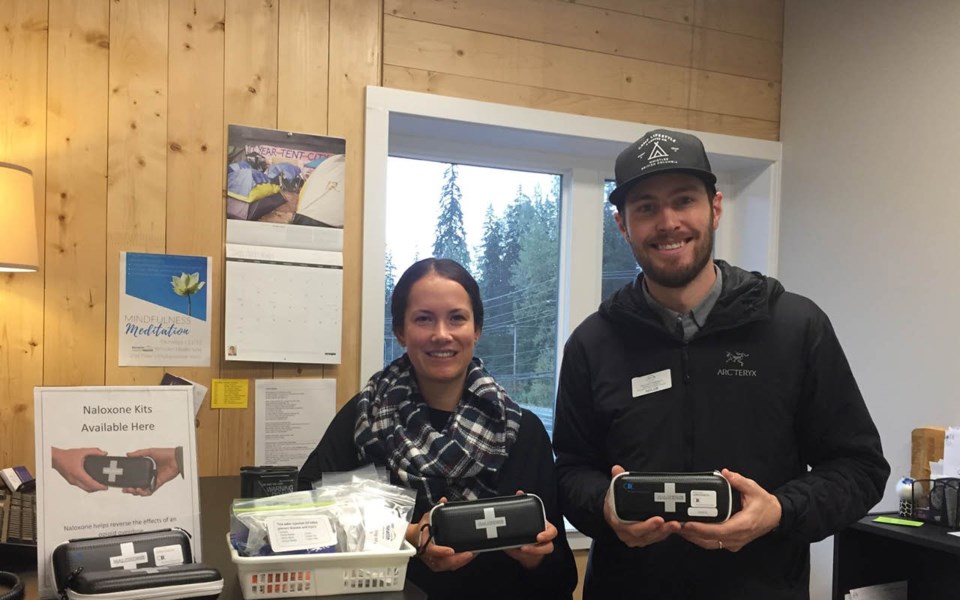A new report from the BC Coroners Service provides a clearer picture about who is dying in the province's ongoing drug-overdose crisis.
To get a sense of just how bad things have become, you don't have to go back very far. While in 2010, there were 211 "unintentional illicit drug overdose deaths," by 2017, there were an estimated 1,450.
In August of 2018 alone, the BC Coroners Service estimated that there were 98 suspected drug overdoses.
Released last week, the 34-page report—Illicit Drug Overdose Deaths in BC: Findings of Coroners Investigations—looked into 872 overdose death investigations in an effort to better understand the crisis.
The report's findings illustrate the deadly effect that fentanyl—which was detected in just over three in every four deaths—has had on B.C.'s drug users.
For Whistler Community Services Society (WCSS) outreach worker Taylor Macdougall, the coroner's report underlines the need for harm-reduction programming, and the fact that the overdose crisis is affecting a wide swath of the public.
"Nobody is immune from this crisis," said Macdougall.
"It doesn't matter if you have a job or income ... if you choose to use substances, you are definitely at risk."
Fentanyl has been found in drugs in Whistler, said Macdougall, adding that there is a trend of it becoming more prominent in rural communities.
"I think thus far, Whistler hasn't seen the extent of the opioid crisis that obviously Vancouver and more urban centres are seeing," he said.
"(However), it's only a matter of time until it makes its way in a significant way to Whistler."
Macdougall said he was struck by the relationship between mental health and deadly overdoses that the report revealed.
More than half of the deceased had reported a clinical mental health diagnosis or showed evidence of a mental health disorder.
"Often folks with mental illness and-or lived experience of trauma use substances to cope," said Macdougall.
"Because so many substances are criminalized, it's much more likely that they will be laced with contaminants like fentanyl."
For Shelagh Smith, manager of mental health and substance use for the Sea to Sky region for Vancouver Coastal Health, the report documented the link between fentanyl and deadly overdoses in an important way. "We know the drugs are tainted, and this just substantiates the depth of the problem," she said.
"I think people need to be aware, when they're using substances, that there is a pretty good chance there is fentanyl in it."
With the report in hand, B.C.'s chief coroner Lisa Lapointe is spreading a harm-reduction message, pleading with the public to take safety precautions if they choose to do drugs.
"Illicit drugs continue to be a source of more than three deaths per day in B.C.," said Lapointe, in a release that accompanied the report.
She also warned of using drugs alone.
"We know this leads to a higher risk for death with a toxic drug supply," said Lapointe. "We continue to urge those using substances to plan to take them in the company of someone who can provide help: administering naloxone and calling 911 for assistance."
This harm-reduction message squares with Macdougall, who said that WCSS tries to make it as easy as possible for people to access harm-reduction equipment, such as safe injection or smoking kits.
The organization is also providing training on how to use Naloxone, a medication that can quickly reverse the effects of an overdose from opioids such as heroin, morphine, fentanyl, carfentanil, and codeine.
WCSS recently facilitated a training workshop aimed at service providers, which brought out around 20 people, and this November, it will be partnering with Vancouver Coastal Health's Opioid Response Team to provide another Naloxone training event.
Macdougall also added that if you are interested in learning how to use a kit, you can drop by WCSS and an outreach worker would be happy to teach you.
"I think a lot of people in Whistler don't know how easy it is and that it's (at) no cost," he said. "So, really, just come in, make an appointment, and be trained."
While fentanyl is primarily found in opioids such as heroin, it can also be found in other substances that are commonly consumed in Whistler—such as cocaine and MDMA.
He is, therefore, urging people who choose to consume drugs to avoid using them alone, use them in smaller amounts, and be with someone with a Naloxone kit—and ensure that they know how to use it.
It's "incredibly difficult" to test drugs for fentanyl because it's so localized, said Macdougall.
"All it takes is the size of a grain of salt of fentanyl to cause a lethal overdose."




